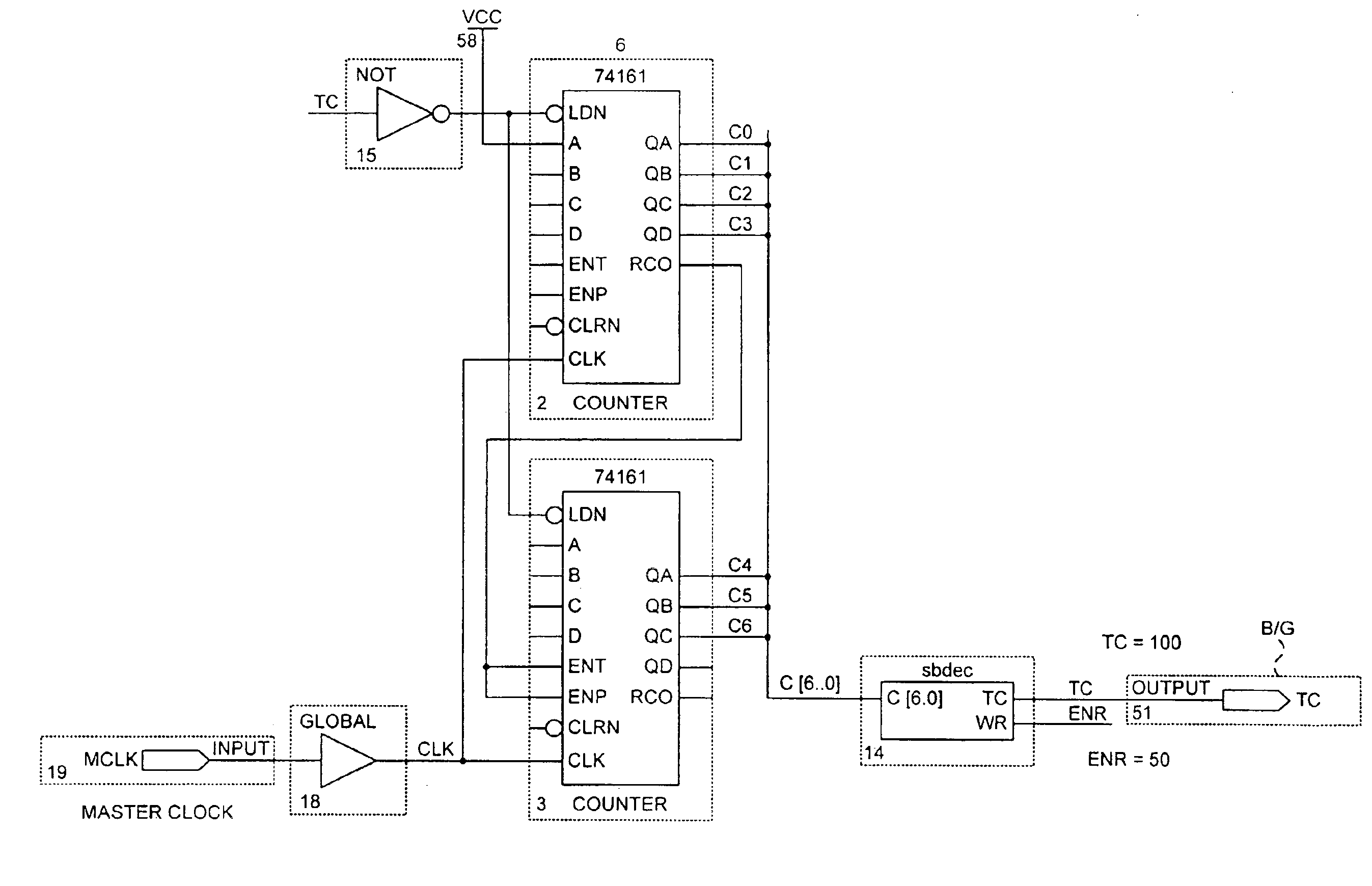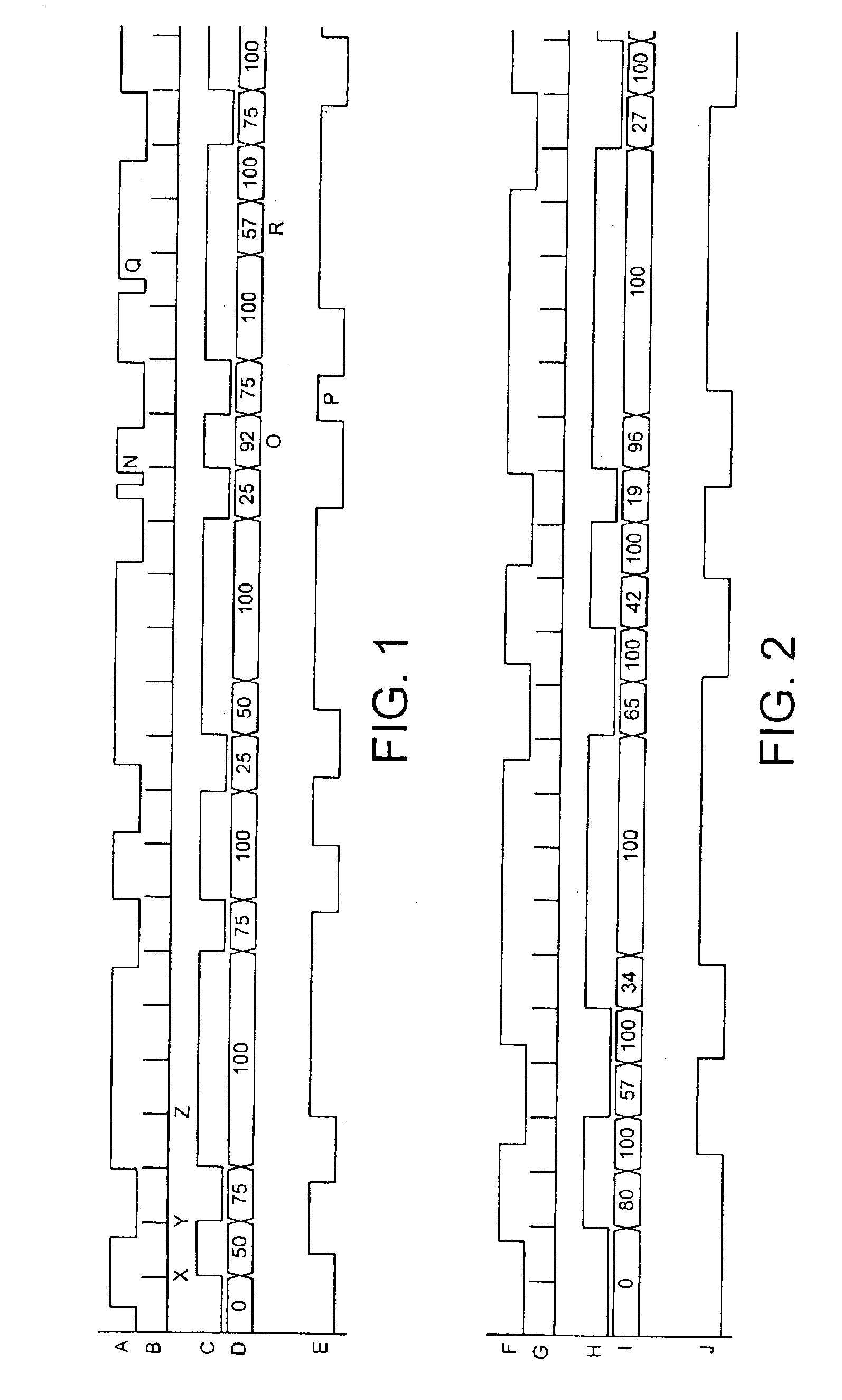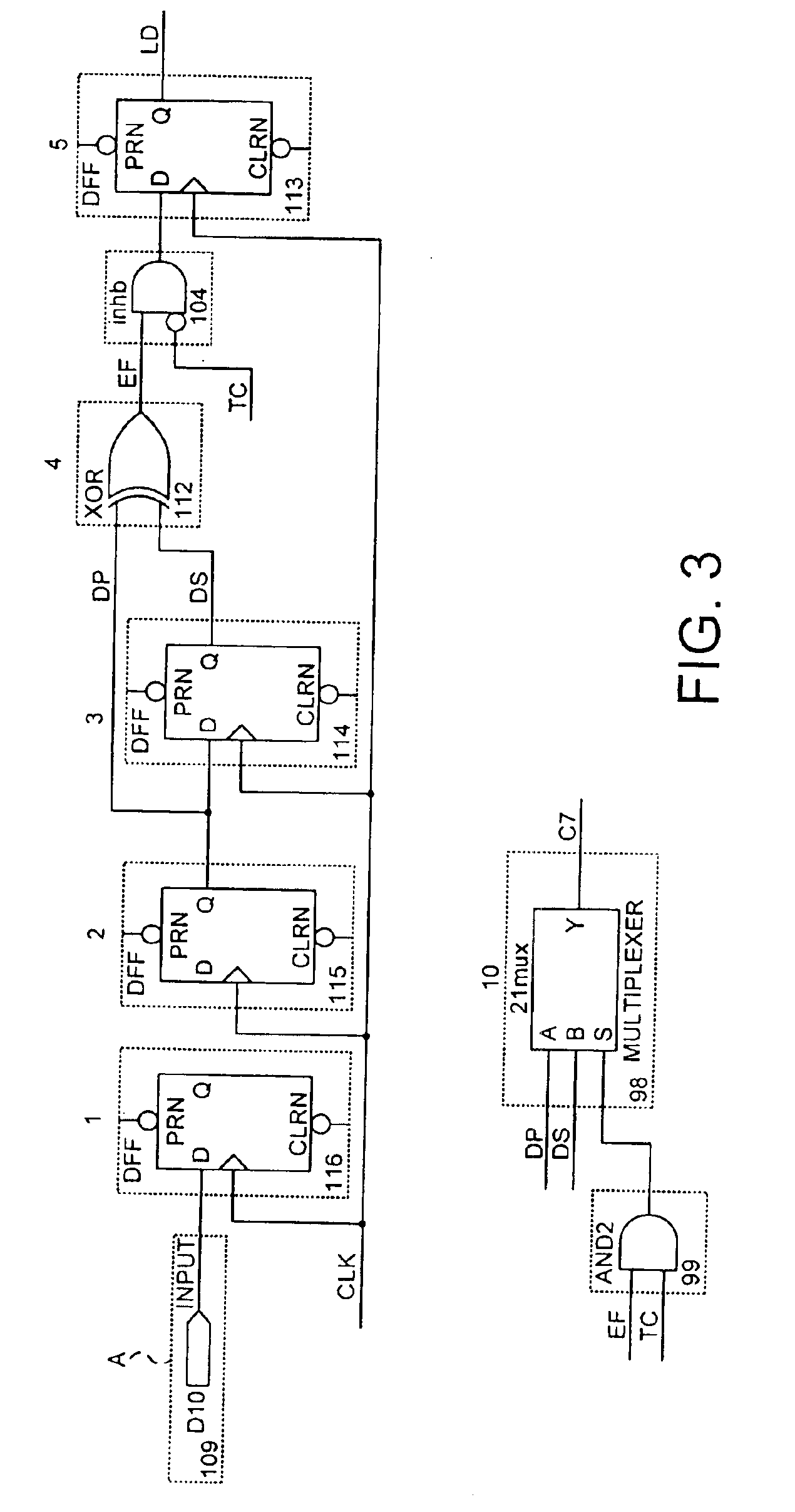Method of encoding a digital data stream
a digital data and data stream technology, applied in the field of data recording, can solve the problems of spoiled phase accuracy of this channel, data becomes irreparably damaged, and it is not easy to make a digital plug-compatible equivalent of the above longitudinal multi-track instrumentation recorder, so as to avoid cumulative errors in determining the position of these transitions and achieve high accuracy
- Summary
- Abstract
- Description
- Claims
- Application Information
AI Technical Summary
Benefits of technology
Problems solved by technology
Method used
Image
Examples
Embodiment Construction
[0030]An embodiment of the present invention will now be described with reference to the accompanying drawings in which:
[0031]FIG. 1 shows timing charts for a first input data stream and the effect of coding it using the present invention;
[0032]FIG. 2 shows timing charts for a second input data stream unrelated to that of FIG. 1, and the effect of coding it using the present invention;
[0033]FIG. 3 shows a circuit diagram for a device effecting coding of the data stream of FIG. 1 using a method in accordance with the present invention;
[0034]FIG. 4 shows a circuit diagram of counters used to effect coding in accordance with the present invention;
[0035]FIG. 5 corresponds to FIG. 3 showing coding of the data stream of FIG. 2, the circuitry of FIG. 3 being reduced to a single symbol;
[0036]FIG. 6 shows a circuit for decoding the coded data stream produced with reference to FIG. 3; and
[0037]FIG. 7 shows a circuit for decoding the coded data stream produced with reference to FIG. 5.
[0038]A ...
PUM
| Property | Measurement | Unit |
|---|---|---|
| frequency | aaaaa | aaaaa |
| time domain | aaaaa | aaaaa |
| time | aaaaa | aaaaa |
Abstract
Description
Claims
Application Information
 Login to View More
Login to View More - R&D
- Intellectual Property
- Life Sciences
- Materials
- Tech Scout
- Unparalleled Data Quality
- Higher Quality Content
- 60% Fewer Hallucinations
Browse by: Latest US Patents, China's latest patents, Technical Efficacy Thesaurus, Application Domain, Technology Topic, Popular Technical Reports.
© 2025 PatSnap. All rights reserved.Legal|Privacy policy|Modern Slavery Act Transparency Statement|Sitemap|About US| Contact US: help@patsnap.com



